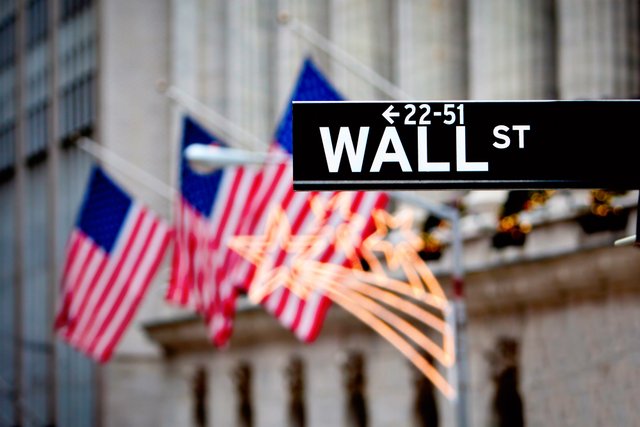
US stocks ended last trading session this week on green as financial sector leaders led Wall Street rallies amid positive start-up in the release season for major US banks and companies, the nerve center of the world's largest economy on Friday and following economic data. Which they followed from the US economy.
The US consumer price index, which showed a slower pace of growth to 0.1% in line with expectations, rose from 0.4% in November, while the core reading of the same index showed a rapid growth rate of 0.3% versus 0.1% The annualized reading of the index showed a slower pace of growth to 2.1% in line with expectations compared to 2.2%, while the core annual reading of the index accelerated the growth rate to 1.8% compared to the previous reading and expectations of 1.7%.
This came in line with the release of retail sales, which account for nearly half of consumer spending, which accounts for more than two-thirds of US gross domestic product, which showed a slowdown in growth to 0.4% from 0.9% in November, worse than expected at 0.4% The core reading of the index itself showed that the growth rate slowed to 0.4% from 1.3%, beating expectations of 0.3%, leading to the release of business inventories, which showed 0.4% growth in line with expectations versus zero at October.
Both the S & P 500 and the Nasdaq Composite Index managed to achieve new record highs for eight sessions on Friday in the first nine sessions of 2018, while the Dow Jones Industrial Average five new record sessions in 2018 amid investors' optimism about the results The Dow Jones Industrial Average and the Dow Jones Industrial Average rose by 2%, 1.8% and 1.6% respectively during the week.
In contrast, JPMorgan Chase, the nation's largest lender by assets, on Friday reported fourth-quarter and full-year results for 2017 as the US tax reform will help boost future earnings for the US banking sector with a lower bill Taxes and business boom, we would like to point out that the US Treasury yields rise short-term to their highest level since 2007, reflecting the weakening of inflationary pressures in the US supporting in turn is the other performance of the financial sector stocks.
White House economic adviser Gary Cohen pointed out last weekend that stock markets are not very high at present and that the tax cut started to reverse slightly on the US economy, adding that wages recorded some gains and expectations for more later, adding that there is a high situation Of optimism about the current situation and that the stock market is just a reflection of the strength of the economic situation.
Earlier this month, US President Donald Trump approved a tax bill to reduce US corporate tax from 35% to 21%, at $ 1.5 trillion, which still spurs risk appetite and drives investors to Turns liquidity into Wall Street indexes, which are holding new record highs.
The Dow Jones Industrial Average ended the session up 0.81% or 205.60 points at 25,574.73 points. The S & P 500 rose 0.70% or 19.33 points to close at 2,767.56 points, while the NASDAQ Composite Index rose 0.81% To close at levels of 7,211.78 points.
Gold futures for February delivery rose 1.25% to currently trade at $ 1,339.00 per ounce, the highest level since September 13 compared to the opening at $ 1,322.50 per ounce, while the US dollar index fell 0.99% to 90.94, Since the second of January of 2015 compared to the opening at 91.85.
On the other hand, crude futures rose to close to their highest level since late 2014 with NYMEX crude futures rising 0.94% to trade at $ 64.40 a barrel, compared to the opening at $ 63.80 per barrel Brent crude for March delivery rose 0.82% to $ 69.83 a barrel from $ 69.26 a barrel.
But US Dollar is still falling, because is overvalued - it may go down till 80 point.
Downvoting a post can decrease pending rewards and make it less visible. Common reasons:
Submit